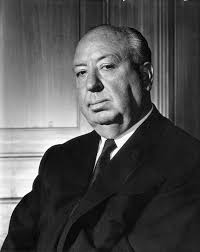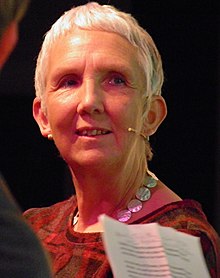Last week, little more than two months after starting it, I finished the first draft of a new novel. At just less than 90,000 words, it’s currently shorter than some of my crime novels, and my editor may suggest that it needs more depth in some places, more background, more whatever. But that’s the thing about a first draft: you write and write, revising as you go, letting the original plan founder in the wake of what comes out of your head. And when it’s done you stand back and look at it from a distance. That’s the time too when you ask someone else to have a look, as you’re too close to see it clearly.
The draft was zipped off to my editor, after one last re-reading and some tidying up. So now, I wait. It’s a curiously flat stage in the process. Day after day for several weeks I sat at the laptop for every available minute. Night after night details of the plot, unfinished business, unresolved anomalies, all reverberated round my brain.

My sleep suffered. Sometimes by morning I could see a way through to the next steps, sometimes the dilemmas turned out to be non-existent. But the damn thing occupied my head almost without respite until I never wanted to see it again.
And now it’s gone. For a day or two I was still fretting about it in the night, but then that wore off and here I sit, waiting, like a deflated balloon.

I’m trying to do the things I put to one side while I was writing, but nothing feels important enough to bother with. Days that passed so fast are now dragging, not helped by a tendon strain that’s restricting my walking and exercise routines. It’s only a week since let the draft go, but it feels like a month and I’m impatient for some reaction. I know there’ll be re-writes to do, but what and how is still to be decided.
When the last book was heading towards publication this time last year, I asked myself whether I ever wanted to do it again. The same question is on my mind now. I know there are so many other things in life I want to do: getting older certainly adds a sense of urgency. But right now nothing other than writing seems to provide the sense of ‘flow’ in the way that Csikszentmihalyi defined it, a very satisfying combination of effort and focus, that makes the hours flash past. Fell walking comes close, and maybe I need to concentrate on my recovery and get the boots back on. With summer coming, that looks like a worthwhile alternative.



 Ann very generously suggested that her book covers ought to reflect the collective effort of its various collaborators by including all their names, not just hers.
Ann very generously suggested that her book covers ought to reflect the collective effort of its various collaborators by including all their names, not just hers.



 From pantomime onwards, everyone enjoys booing the villain and seeing her/his downfall, and the same is true of some modern psychological thrillers so that the fear can be cranked up as the ‘goodie’ (or ‘less baddie’) is faced with an implacable foe. Sometimes it’s their very badness that makes the character entertaining: the Devil in Milton’s ‘Paradise Lost’ is probably the most interesting being in the work. But I still prefer to introduce some nuances. Weakness in the villain may produce a lower level of fright, but it can add to the tension in more subtle ways.
From pantomime onwards, everyone enjoys booing the villain and seeing her/his downfall, and the same is true of some modern psychological thrillers so that the fear can be cranked up as the ‘goodie’ (or ‘less baddie’) is faced with an implacable foe. Sometimes it’s their very badness that makes the character entertaining: the Devil in Milton’s ‘Paradise Lost’ is probably the most interesting being in the work. But I still prefer to introduce some nuances. Weakness in the villain may produce a lower level of fright, but it can add to the tension in more subtle ways.

 confusions and unnecessary scenes and characters, and once or twice the whole thing nearly ended up in the bin. Never again, and as I turned towards crime fiction the need for planning became more intense. There’s still fun in working out how all the threads will tie together, and how the reader will be keep on turning the pages, but the fun’s now in the planning, not in the actual first draft.
confusions and unnecessary scenes and characters, and once or twice the whole thing nearly ended up in the bin. Never again, and as I turned towards crime fiction the need for planning became more intense. There’s still fun in working out how all the threads will tie together, and how the reader will be keep on turning the pages, but the fun’s now in the planning, not in the actual first draft.


 was undoubtedly a catastrophe, and mention of it can still stir a wide range of emotions – sadness, anger, and fear are commonplace among my neighbours and farmers across the county. We could deal with all that by saying nothing, or by remembering and sharing memories and giving ourselves permission to move on. It’s not mawkish or self-indulgent or false to talk about bad times. They happened, people and animals suffered, children were traumatised, businesses were lost, lives were changed.
was undoubtedly a catastrophe, and mention of it can still stir a wide range of emotions – sadness, anger, and fear are commonplace among my neighbours and farmers across the county. We could deal with all that by saying nothing, or by remembering and sharing memories and giving ourselves permission to move on. It’s not mawkish or self-indulgent or false to talk about bad times. They happened, people and animals suffered, children were traumatised, businesses were lost, lives were changed.
 Large dairy farms often employ people to help with milking and the care of the herd, but during the outbreak restrictions were introduced that made it impossible for dairy farm workers to work normally, going home after work and coming back the next day. This particular farm asked a family friend from Liverpool to come and stay on the farm for the duration to help them, and the young man had no experience of farming life. He reacted to the everyday routines of the farm as you or I might, noticing things that the farmers took for granted, asking naive questions, making mistakes through lack of experience. In literary terms, this character’s function is somewhere between the Greek chorus and the gravediggers in Hamlet, and more emotionally detached than the farmers themselves as the outbreak spread ever closer. In a crime story, as this will be, the ‘stranger’ can also be a useful source of tension and mystery. Let’s see how it all turns out.
Large dairy farms often employ people to help with milking and the care of the herd, but during the outbreak restrictions were introduced that made it impossible for dairy farm workers to work normally, going home after work and coming back the next day. This particular farm asked a family friend from Liverpool to come and stay on the farm for the duration to help them, and the young man had no experience of farming life. He reacted to the everyday routines of the farm as you or I might, noticing things that the farmers took for granted, asking naive questions, making mistakes through lack of experience. In literary terms, this character’s function is somewhere between the Greek chorus and the gravediggers in Hamlet, and more emotionally detached than the farmers themselves as the outbreak spread ever closer. In a crime story, as this will be, the ‘stranger’ can also be a useful source of tension and mystery. Let’s see how it all turns out.